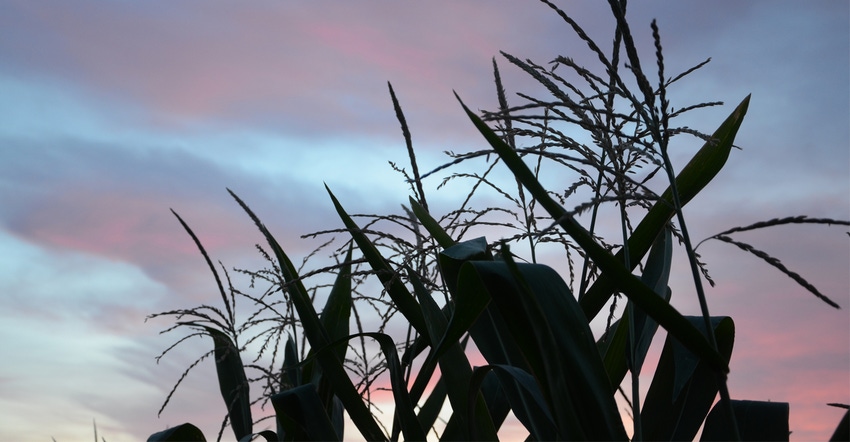January 6, 2022

Are you ready to add a new crop to your rotation? That's really the push, as companies line up to work with farmers to take advantage of the potential of a carbon market. That extra crop would be carbon you capture in your soil. And for 2022, Truterra has outlined a two-pronged approach to work with farmers to advance its carbon initiatives.
Farm Progress talked with Jason Weller, president, Truterra LLC, the sustainability arm of cooperative Land O'Lakes; and Jim Hedges, vice president, seed marketing, WinField United, about the 2022 program.
"[Carbon] is like another crop, like a grain crop," Weller says. "The carbon crop can also be an annual transaction. So as you produce grain, as you grow a cash crop — if you're using soil health systems and good nutrient management systems, you are also generating a lot of biomass, and that gets converted into soil organic carbon."
That carbon is a new kind of annual crop that's measurable, and can be "sold" into the carbon market for a payment. Truterra is working with major buyers of carbon credits, including companies like Microsoft, to provide what are known as verifiable, high-quality credits in the market. Truterra pays the farmer for the verified carbon crop and then sells that into the carbon market.
Recently, the company announced that in 2021, the Truterra Carbon Program paid $4 million for 200,000 metric tons of carbon stored in the first year of the program. Some of that payment went to "previous-year" carbon crops verified by a third-party source to review up to five years of on-farm activity.
"There were farmers that had, in some cases, two, three, and four years of carbon crops and they were compensated for that each crop year," Weller explains.
That program is continuing for 2022, where farmers using those established practices — cover crops, reduced and no-till, and nutrient management — can be compensated for the carbon crop created on the farm. What's new for 2022 is a program that offers an incentive to help farmers prepare that carbon crop production program for the future.
Bringing in more carbon farmers
"This is where WinField United and Truterra are joining forces," Weller says. "We're excited to be able to issue those payments and reward farmers for good soil stewardship Now, we're pivoting into helping more farmers access this carbon market and preparing their farming operations for the future marketing opportunity."
Truterra will continue its existing carbon program, which is structured similarly to the Truterra 2021 program, focused on generating carbon assets in partnership with farmers using soil health practices. Those farmers may be eligible for a one-time, upfront payment of $20 per ton of carbon, based on recently adopted changes in soil health practices. Eligible crops include corn, soybean, wheat or cotton as part of a farmer's rotation.
But new for 2022, the organization has launched a forward-looking approach for farmers implementing smart practices for the first time and who are interested in potentially being part of carbon programs in the future. This is the carbon market access program, where farmers just getting started may be eligible for an upfront payment of $2 per acre for enrolling.
"They get an incentive payment — basically a thank you for being in the program," Weller explains. "But beyond the incentive payment, they're also getting agronomic support. They're having opportunities for services that will drive ROI and good production assistance with the conservation adoption."
Hedges explains this carbon access program is aimed at helping growers in 2022, who aren't prepared for carbon, move into that market while reducing the risk. "Basically, we start with a soil assessment, because everything begins with soil health," he says. "I'm a seed guy, and you've always heard me say it all begins with the seed. It really doesn't if soil health isn't there."
He points to the power of the carbon bank and the nutrient bank in healthy soil. "If you don't have good soil health, you'll never access all the goodies in that nutrient bank," Hedges adds.
From that soil assessment, Hedges says Truterra will know if the grower qualifies for the Truterra Carbon Program, so they have a path to the market. Or if they're new into this market, "We can help them at their comfort level move down various pathways to that carbon market," he adds.
This new program more directly involves WinField United agronomists in that journey for farmers who eventually want to add carbon as an income stream for the farm. The long-term key is developing a verifiable high-quality carbon crop.
Sign-up time running out
The key now is that Truterra is on a tight schedule to sign up farmers for both programs. Weller explains that the aim is to have everyone signed up by Feb. 1, so the work of soil health verification and other information can be gathered in time. This is true for both the Truterra Carbon Program and the carbon market access program.
Verifiable high-quality carbon stored in the soil remains the goal, and is necessary for farmers to get access to those payments. Says Weller: "It comes down to the quality. Farmers are creating [carbon], and it's like a crop, but it's a crop they never deliver; it stays in the ground. So the buyer can't measure it. They can't taste it. They can't see it. They never take delivery. They have to trust that the carbon is actually in the ground. The way you create that assurance from the buyer and command a premium is that ultimately, you have to be able to quantify that carbon. That's the reason we're passionate around quality and generating the best return for the farmer."
Learn more at truterraag.com/carbon.
About the Author(s)
You May Also Like






